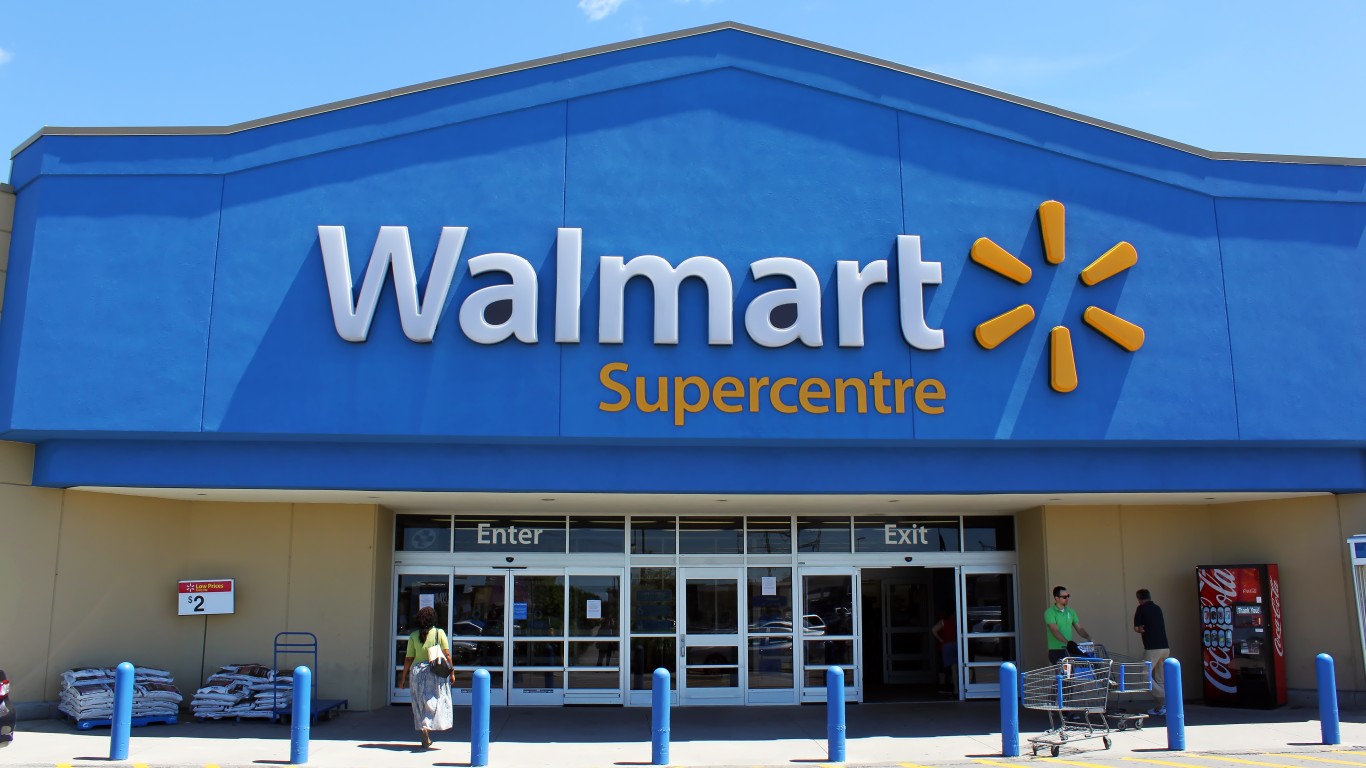
When the U.S. Census Bureau released on Wednesday morning its report on advance monthly retail sales for April, the agency lowered its sales decline for March from 1.0% to 0.7% and reported a month-over-month increase of 4% in retail sales. April sales are 1.22% above sales for April 2022. The sales increase is likely due more to higher prices than to higher volume.
For grocery and general merchandise retailers, sales rose 4.8% and 5.5%, respectively, year over year. A lot of that increase is going directly to companies that make packaged food products. Coca-Cola, for instance, raised prices in the first quarter, and profits increased by 12%. PepsiCo raised prices by 16% and increased its profits by 18%, even though sales volume fell. (These are the biggest grocery store chains in America.)
Where does that leave Walmart Inc. (NYSE: WMT)? The country’s largest employer and its biggest retail store operator will report first-quarter earnings before markets open on Thursday, and investors are likely to find out that Walmart has struggled to meet even a much lower bar. Rising producer costs plus higher logistics costs could yield a nasty surprise.
Of 42 analysts covering the Dow Jones industrials mainstay, 31 have a Buy or Strong Buy rating. The other 11 have rated it at Hold. At a recent price of around $151.50 a share, the upside potential based on a median price target of $65.00 is about 8.9%. At the high price target of $180.00, the upside potential rises to 18.8%.
The consensus first-quarter 2024 revenue estimate is $147.84 billion, which would be down 9.6% sequentially but up 5.4% year over year. Adjusted earnings per share (EPS) are forecast at $1.32, down 23.0% sequentially and 1.2% higher year over year. For the full fiscal year ending next January, analysts expect Walmart to report EPS of $6.14, down 2.4%, on sales of $628.54 billion, up 3.7%.
It appears that analysts expect Walmart either to increase traffic (and, hence, more sales) or to somehow get producers like Coke and Pepsi to play more nicely. Yet, only a drop in sales is likely to persuade packaged foods producers to cool it with the price hikes.
Competitor Target Corp. (NYSE: TGT) reports first-quarter results early Wednesday. Analysts estimate sequential declines of more than 19% in sales and 5% in EPS. Adjusted EPS are forecast to rise by more than 40% year over year, while sales are expected to rise by less than 2%. It hardly seems possible that Target is going to post such a large increase in EPS with such a small increase in sales. The full-year forecast for Walmart seems more likely to reflect the reality of worries about inflation and consumer spending for the rest of this year.
Are You Still Paying With a Debit Card?
The average American spends $17,274 on debit cards a year, and it’s a HUGE mistake. First, debit cards don’t have the same fraud protections as credit cards. Once your money is gone, it’s gone. But more importantly you can actually get something back from this spending every time you swipe.
Issuers are handing out wild bonuses right now. With some you can earn up to 5% back on every purchase. That’s like getting a 5% discount on everything you buy!
Our top pick is kind of hard to imagine. Not only does it pay up to 5% back, it also includes a $200 cash back reward in the first six months, a 0% intro APR, and…. $0 annual fee. It’s quite literally free money for any one that uses a card regularly. Click here to learn more!
Flywheel Publishing has partnered with CardRatings to provide coverage of credit card products. Flywheel Publishing and CardRatings may receive a commission from card issuers.
Thank you for reading! Have some feedback for us?
Contact the 24/7 Wall St. editorial team.





